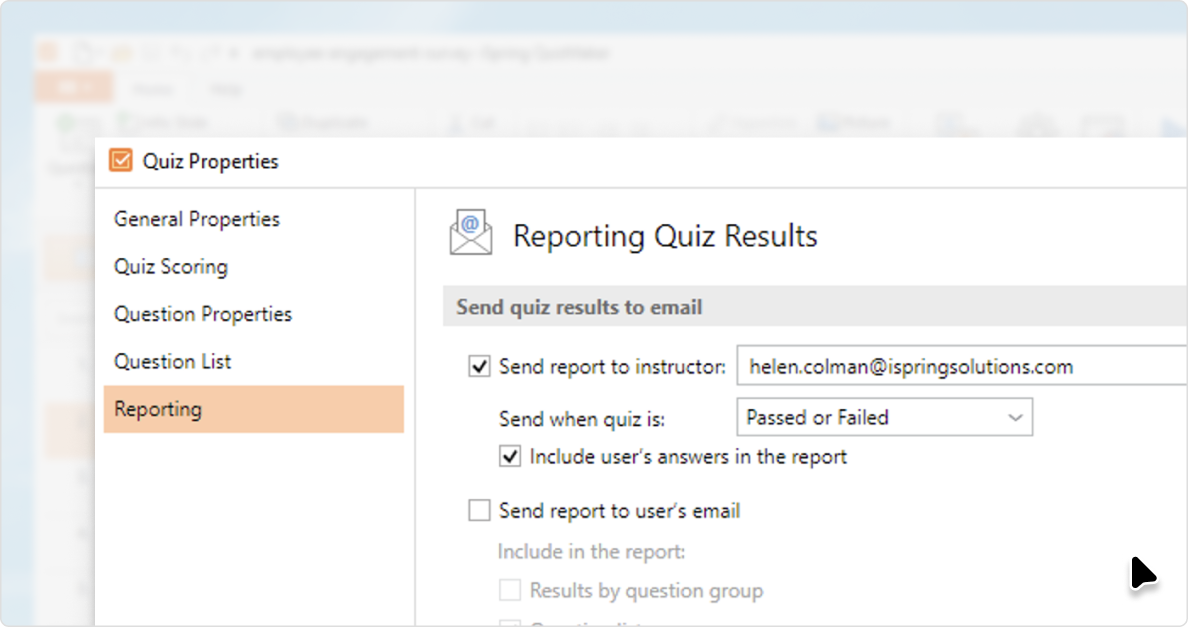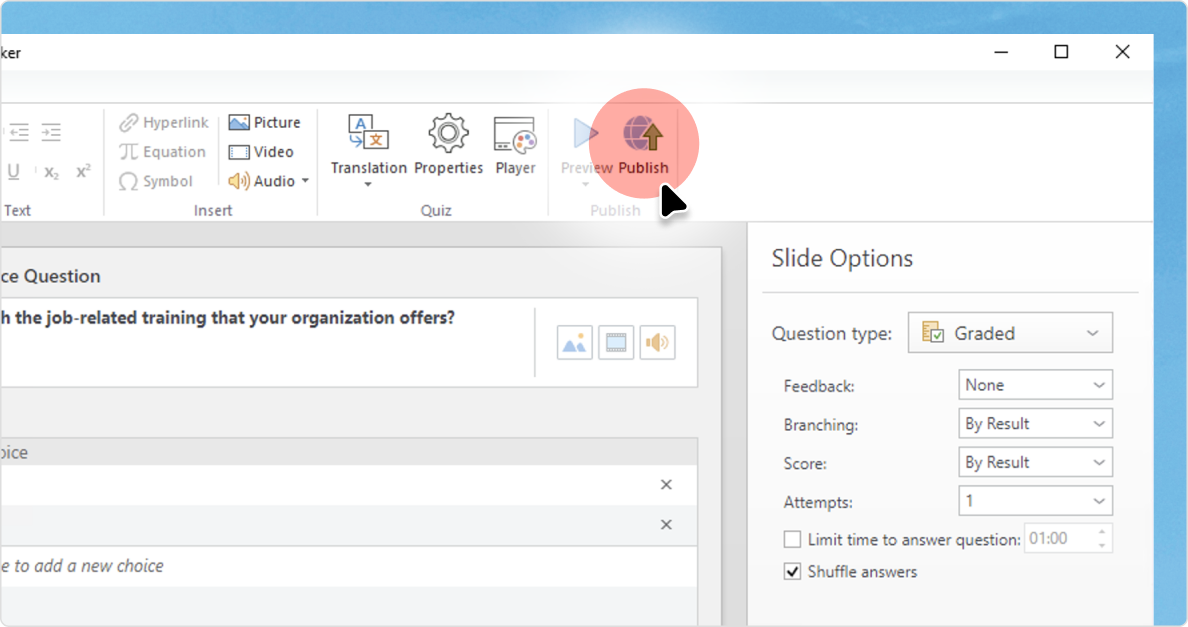28 Employee Engagement Survey Questions You Need to Ask

Engagement is the driving force behind employee retention and productivity. It’s important to check how engaged your employees are regularly to catch any potential issues before they become major ones, like low morale and high turnover .
That’s where employee engagement surveys come in. They’re an invaluable tool for understanding your team’s needs and identifying areas for improvement. By asking the right employee engagement survey questions (also known as staff engagement questions), you can gain insights that lead to positive changes and a more enjoyable workplace.
In this article, you’ll learn:
- The importance of employee engagement surveys for the workplace
- Key areas to focus on in staff engagement surveys
- How to calculate and interpret team survey scores
- The best employee engagement questions to ask your team
- Tips for automating the survey process
Key takeaways
- Employee engagement surveys are essential for understanding team needs and improving workplace satisfaction.
- By regularly evaluating engagement levels, you can identify potential issues early, thereby boosting productivity and reducing turnover.
- Key survey areas include training, role alignment, recognition, work relationships, and well-being.
- Calculating engagement involves counting the Yes responses to determine overall employee satisfaction.
- A high engagement score indicates a happy and motivated workforce.
Why Is It Important to Measure Employee Engagement?
Employee engagement reflects an emotional state where team members feel passionate about their work and try to do their job as well as they can. Here’s why measuring it is crucial:
- Boosts productivity. When employee sentiment is positive and employees feel engaged, they naturally put more effort into their work. This leads to higher productivity and helps the entire team succeed.
- Enhances retention. Employees who feel connected and valued are more inclined to stay with the company. This helps reduce turnover, and the costs associated with hiring and training new staff.
- Improves job satisfaction. By keeping a pulse on engagement, companies can figure out what makes their employees feel happy and fulfilled and thus create a more enjoyable work environment.
- Fosters innovation. When people are engaged, they’re more likely to come up with new ideas and creative solutions that help the company stay ahead of the curve.
- Elevates customer satisfaction. Engaged employees often mean happy customers. They provide better service, which boosts customer satisfaction and loyalty.
- Strengthens company culture. Measuring engagement to enhance it as needed facilitates building a positive company culture where people feel valued and motivated; the company is thus a place where they actually want to work.
Also read: Employee Engagement Strategies: Supercharge Your Staff
Best Employee Engagement Survey Questions to Ask Your Team
To get the most out of an employee survey, it’s crucial to understand what makes employees dedicated and motivates them to work to their highest potential. We’ve identified seven key factors that impact employee engagement and developed four employee engagement survey questions for each area. Together, they can help you see what works well in your organization and what still needs to be improved.
Training and career development survey questions
Research has found that 86% of millennials, which constitutes the majority of today’s workforce, believe that if they had “career training and development” through their employers, they wouldn’t leave their jobs. Since learning opportunities and potential for professional growth are among the largest drivers of employee engagement, it’s crucial that your employee engagement survey results show that your colleagues feel they have enough training and can find fulfillment in their jobs. And if not, that needs to be addressed.
Questions to ask:
- Are you satisfied with the job-related training that your organization offers?
- Do you think your organization is committed to your professional development?
- Do you feel you have enough opportunities to apply your talents and expertise?
- Are you pleased with the career advancement opportunities available to you?
Role and company alignment survey questions
Employees need to understand how they fit into the organization and how their tasks support the company’s mission. This alignment is crucial for both employee motivation and work-life balance. Include questions that help determine if your staff understands the organization’s goals and sees the connection between their work and the company’s objectives.
Questions to ask:
- Do you understand the company’s strategic goals and mission?
- Do you know what to do to help the organization achieve its objectives?
- Can you see a clear link between your work and the company’s goals?
- Does the company’s mission make you feel that your work is important?
Employee recognition survey questions
Every team member wants to feel that their contributions are recognized and appreciated and to receive praise for doing good work. Gallup found that giving praise has a great impact on a company’s bottom line and its employee retention. However, in some organizations, this significant engagement driver is overlooked. Again, you can check to see if it works in your company by asking the right employee satisfaction survey questions in your employee engagement survey.
Questions to ask:
- Do you feel appreciated for the work you do in this organization?
- Does your supervisor regularly recognize your efforts and contributions?
- Has your supervisor ever discussed your progress with you?
- Are you satisfied with the company’s/department’s recognition program?
Team culture and work relationship survey questions
A positive team culture and strong work relationships are key to a successful workplace and enhancing the employee experience. They create a supportive atmosphere where employees feel valued, understood, and motivated. In SHRM’s Report, relationships with coworkers were identified as the top engagement condition, with 77% of respondents recognizing these connections as a priority. So, it’s a good idea to include survey questions that will reveal if your employees feel connected to their coworkers and if the workplace culture is flourishing.
Questions to ask:
- Do you feel connected to your colleagues?
- Do you feel supported by your team when facing challenges at work?
- Does your supervisor or someone at work seem to care about you?
- Do people on your team collaborate and help each other?
Employee well-being survey questions
Employee well-being is a critical aspect of a healthy and productive workplace. It touches upon physical, mental, and emotional health that influences job satisfaction, performance, and retention. Survey questions that focus on employees’ well-being help companies understand how supported and balanced staff members feel in their work environment and what can be done to improve their work lives.
Questions to ask:
- Do you feel you have the support you need to manage your workload effectively?
- Do you have enough time for your personal life outside of work?
- Does the workplace environment support your physical health?
- Do you think the company cares about your mental and emotional well-being?
Diversity, equity, inclusion, and belonging (DEIB) survey questions
Understanding and supporting diversity, equity, inclusion, and belonging (DEIB) is crucial for a successful workplace. By asking the appropriate employee engagement questions, you can learn how to make your environment more welcoming and equitable for everyone.
Questions to ask:
- Do you see a range of backgrounds and perspectives in your team?
- Do you think everyone in the company has an equal opportunity to grow and thrive?
- Do you feel welcomed and included in team activities and discussions?
- Do you feel like a valued member of your team?
Management and leadership survey questions
Effective leaders inspire, support, and guide their teams, while strong management ensures that organizational goals are met efficiently. To understand how employees perceive management and leadership in the company, you need to include the right questions in employee engagement surveys.
Questions to ask:
- Are you informed about important decisions and changes within the company?
- Does your manager treat team members with respect?
- Do you feel supported by your manager in your professional development?
- Is the feedback you receive from your manager specific and actionable?
Considering all the factors we’ve covered above, we’ve put together a list of 28 questions that can help you find out whether your employees feel engaged or not. You can regard it as a point of departure for writing your own employee survey questions or use it as it is.
Download employee engagement survey
How to Calculate an Employee Engagement Score
Just surveying your employees isn’t enough. The next step is to measure the level of employee engagement in your company, analyze your colleagues’ responses, and find ways to improve the situation.
Here’s how you can calculate engagement by using our Yes/No questions:
- Take the total of how many team engagement survey questions have been asked to all employees.
- Count the Yes responses from the entire employee survey questionnaire.
- Calculate the ratio for Yes survey responses. The number you’ll get is the engagement rate for your company.
Example:
The survey consisted of 28 questions and was completed by 200 people. This means a total of 5,600 questions were answered (28 questions x 200 people). Out of these, 4,536 were Yes responses. To find the ratio, we calculate (4,536 ÷ 5,600) x 100 = 81%. That’s an impressive outcome!
The fact that the ratio is over 70% indicates a high level of engagement. If your result is above 50%, it’s also a sign that your employees feel engaged, but there’s still room for improvement. If the rate is less than 50%, there is a lot that needs to be worked on.
How to Get the Most Out of Employee Engagement Surveys
To keep your survey on the right track, we’ve made a list of rules for survey creation. Check out how to ask the questions correctly to get higher response rates and realistic data.
Keep employee surveys short
Survey software experts from SurveyMonkey recommend that polls should take no longer than 7-8 minutes to complete.
Keep questions clear and concise
Make the questions simple so your employees understand what you’re asking. Make sure each question includes only one idea. Otherwise, you risk confusing your respondents and getting unsound data.
YeS
- How satisfied are you with your job position?
- How satisfied are you with your salary?
NO
- How satisfied are you with your job position and salary?
Provide specific questions
General questions can make the data difficult to interpret. So, instead of generalized, “How do you like your workplace?” (What exactly does it mean that someone likes their workplace?) it’s better to ask a more specific question that will let you understand what they think about it. It is also more effective to use open-ended employee engagement survey questions as they allow respondents to express their thoughts and feelings in their own words and provide more details.
YES
- Would you recommend working for this company to your family and friends?
NO
- How do you like your workplace?
Allow anonymous participation
When being surveyed, people can feel uncomfortable or threatened by telling the truth. So, to collect honest employee feedback, allow your colleagues to respond to the work engagement survey anonymously.
Set deadlines
In order to avoid your colleagues spending an excessive amount of time responding to your survey, establish dates. According to SurveyMonkey’s research, 80% of responses are typically collected within seven days. So, a week can be a good time frame in which to complete the employee engagement questionnaire. And if you want to get more responses, you can send out a reminder email after a week because that might stimulate some of those who are lagging behind.
Run surveys regularly
Quantum Workplace’s survey experts believe that an annual employee engagement survey is more effective than less frequent ones. This survey timing helps keep your business focused on boosting engagement and allows it to assess the impact of change initiatives and identify emerging workforce challenges.
How to Automate Employee Engagement Surveys
It can be a tedious task to send surveys out and even more stressful to gather and process the results. To run employee engagement activities efficiently, you need a software tool that will help put the entire process on autopilot.
For example, you can use the iSpring Suite authoring tool. It will allow you to create a survey easily, share it online, collect the statistics on each employee engagement rate (anonymously), and analyze their responses. Here’s what a survey created with iSpring Suite looks like:
You can download this employee engagement survey template and start gathering insight from your staff today. But before you do this, you’ll need to download the iSpring Suite free trial to specify the email where you’ll receive the reports on your employees’ results.
- After you have installed the software and downloaded the template, click on the template icon to open it in the iSpring Suite quiz maker tool and choose Properties on the toolbar.
- Select reporting on the menu at the left and checkmark Send report to instructor. Enter your email address and checkmark Include user’s answers in the report to find out what each participant selected as their answers.
The reports you receive will include information from your employees’ replies, with no names cited.

- After you save the settings, you need to publish the survey. Click on Publish on the toolbar.

- Choose My Computer to save the survey on your computer in HTML5 format and click on Publish again.
Share the published survey with an LMS, upload it to your website/intranet, or send it to your colleagues via email.
Note: If desired, you can adjust the survey by replacing the staff survey questions or adding new slides with other questions. For example, you can add an essay question to ask your employees to write a detailed response on how they feel at work or use a Likert Scale, with options ranging from Strongly Agree to Strongly Disagree, to get a more holistic view of your colleagues’ opinions of how engaged they are.

Conclusion
The 28 employee engagement survey questions in this article will help you better understand your colleagues’ needs and motivation. Give the survey a go to shed light on blind spots and find a solution for improving your employee retention rate and the company’s performance.
Don’t forget to download the employee engagement survey template.








